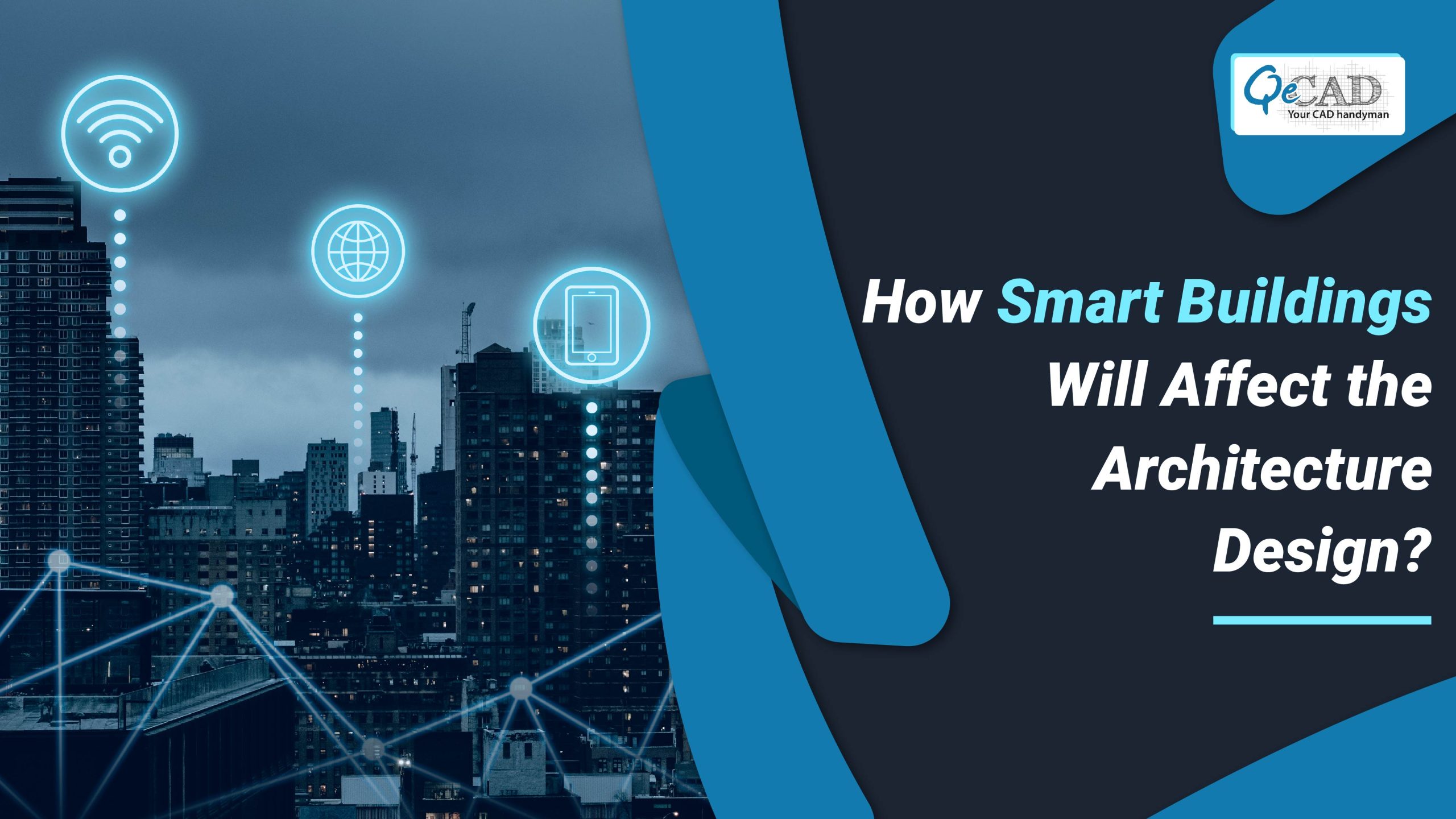
Smart buildings are a result of the technological revolution in the AEC Industry. It is the most advanced way of designing the building structure to make the most out of the resources. It concentrates more on reducing energy consumption and costings, maximizing efficiency, and securing the environment for its users.
What Exactly is a Smart Building?
A Smart building is a structure that acts smartly regarding its operations and functioning. It uses intelligent processes and advanced and integrated building technology systems to optimize and automate the building control systems such as heating, ventilation, air conditioning, lighting, water usage, power management, and so on. Using IoT sensors, smart building enables its occupant to manage the built structure in a better way by providing relevant, actionable information.
What are the Key Components of a Smart Building?
To design and create an efficient smart building, a few key components need to be considered below:
1) IoT (Internet of Things): Smart building is designed on the concept of IoT sensors that keeps a note of environmental and surrounding aspects such as motion, temperature, air quality, light, emergency, threat, and other changes. All the data relevant to these aspects are fed and communicated to the cloud with the help of sensors and can be accessed as and when needed.
2) Advanced Software: To interpret and analyze the information gathered by the sensors and to turn it into helpful information in favor of the building, advanced analytical software is used to convert this information to a desired action.
3)User Interface: A user-friendly interface should be designed to make it easy to understand and manage the building systems. The displays and screens with easy navigation and languages will make the intelligent buildings behave even more smarter.
4)Internet Devices & Connectivity: An intelligent building should be equipped with fast and reliable Wi-Fi to operate and function effectively. This will significantly enhance cyber security and reduce threats to building facilities. Connectivity infrastructure design is intelligent building design’s most complex yet needed element.
The above components will make the building design more smart, reliable, and sustainable. In addition to these components, a smart building has some key features that make it more advanced and different from traditional structures.
What are the Features of a Smart Building?
1)Automated Control Systems
2)Building Management Systems
3)Energy Management Systems
4)Network, Data, and Security Devices
5)Digital Infrastructure
6)Cloud Integration
7)Wireless Technology
8)Capacity Sensors
9)Smart Lighting
10)Air Quality Monitoring
11)Optimized HVAC Systems
12)Intelligent Parking
13)Remote Monitoring
14)Green Designs
15)Sustainable Materials
The listed features of smart infrastructure entail many benefits to the architectural world and its users overall.
Benefits of a Smart Building
Smart buildings will be of utmost importance to architects, builders, contractors, and stakeholders and would be a worthwhile investment. Let’s see how.
- Improved Efficiency: With the use of IoT technology, appropriate utilization of heating and lighting is being done, contributing to drastic improvements in building performance and efficiency. These sensors are essential in gathering required information and appropriately performing actions.
- Reduced Costs: Smart buildings can cost huge in terms of design and setup, requiring special devices and network design to let them operate appropriately. But the building costs will be worthwhile due to its efficiency and low-cost maintenance in the future.
- Reduced Energy Consumption: The traditional building structure consumes ample energy for its operations and functions, but Smart buildings reduce the consumption level of energy through their automated control systems and deliver a sustainable design. According to Smart Building Magazine, Smart buildings can save on energy consumption by around 15% and 25%.
- Optimized Resource Utilization: However complex the built structures are, the smarter ones would be balancing the utilization of resources and optimizing their allocation through the appropriate use of cloud technology.
- Improved Maintenance: Since all the building information access are handy on the cloud, it can be easily accessed for better and faster maintenance. All the repairs, renovations, or modifications at later cycles can be amplified, reducing potential shutdowns.
How Smart Buildings Will Change the Coerce of Architectural Design?
Smart buildings feature impressive characteristics with enormous benefits. It will raise the bars of the construction industry with improved building performance and comfort the tenants most innovatively. It will transform the architectural design positively with the introduction of automated systems and designing energy efficient structures with green roofs, improved building security, operations, and maintenance in the most aesthetic way.
To design an intelligent building, high-quality BIM models must be used to depict every component and device with its details and functionalities and their interlinking. Accurate BIM services will help locate and manage the devices appropriately in the built structure. Designing a smart building will also require blending the right technology with appropriate interior and exterior components management. This can be achieved with the help of 3D Rendering Services. The design team must apply new concepts in interior rendering services and exterior rendering services to design the building attributes of high quality that can give a clear idea and execution of the smart structure.
Smart building design will alter the future of architectural design by constructing the most responsive structures that will react to environmental and surrounding changes. With the right mix of intelligent systems embedded in the concept design, the future of architectural design for smart buildings is bright and right.
